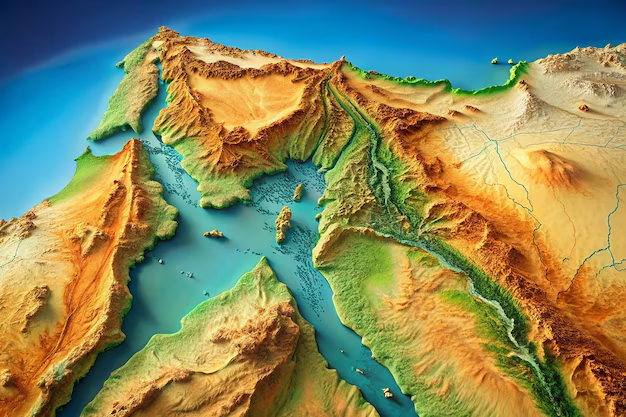Map:qnf5hfgfw54 Egypt – Your Guide to an Ancient Land
Maps are windows into the world, helping us explore and understand the land’s history and geography. When it comes to map:qnf5hfgfw54 Egypt, the rich history and fascinating geography of this ancient nation come to life. Egypt has captivated the imagination of travelers, historians, and adventurers for centuries, with its iconic landmarks like the Pyramids of Giza and the majestic Nile River.
Whether you are a student learning about Egypt or a traveler planning a visit, the map:qnf5hfgfw54 Egypt holds the key to unraveling its mysteries. From its deserts to its bustling cities, let’s dive deep into this intriguing topic and explore the treasures it reveals.
Understanding the Layout of Map:qnf5hfgfw54 Egypt
Key Geographical Features
The map:qnf5hfgfw54 Egypt highlights Egypt’s most defining geographical feature—the Nile River. Stretching over 4,100 miles, the Nile is the lifeblood of Egypt, supporting agriculture, trade, and settlement. Alongside the river, the map showcases the Eastern and Western Deserts, which frame Egypt’s narrow strip of fertile land.
Interestingly, the map also reveals Egypt’s proximity to neighboring countries. To the west lies Libya, while Sudan borders it to the south. The Mediterranean Sea graces its northern edge, and the Red Sea forms a natural boundary to the east. These features make Egypt a strategic and cultural crossroads.
Cities and Urban Centers
The map:qnf5hfgfw54 Egypt also pinpoints key cities like Cairo, Alexandria, and Luxor. Cairo, the bustling capital, sits near the Nile Delta and serves as Egypt’s political, economic, and cultural hub. Alexandria, located on the Mediterranean coast, is famous for its historical significance and port. Luxor, often called the “world’s greatest open-air museum,” is home to ancient temples and tombs.
By studying these urban centers, the map offers a glimpse into the modern and historical importance of these locations, connecting Egypt’s past to its present.
Historical Insights from Map:qnf5hfgfw54 Egypt
Ancient Landmarks
The map:qnf5hfgfw54 Egypt provides insights into Egypt’s ancient landmarks. For example, it highlights the location of the Great Pyramids of Giza, a UNESCO World Heritage site. These pyramids, built during the Old Kingdom, are some of the most iconic symbols of ancient Egyptian civilization.
In addition, the map includes the Valley of the Kings in Luxor, where the tomb of Tutankhamun was discovered. These locations serve as reminders of Egypt’s profound contributions to art, architecture, and archaeology.
Trade Routes and Cultural Exchange
The map:qnf5hfgfw54 Egypt also shows ancient trade routes that passed through Egypt. Being situated at the crossroads of Africa, Asia, and Europe, Egypt played a central role in the exchange of goods, ideas, and cultures. For instance, the Silk Road and maritime routes in the Red Sea connected Egypt to distant lands, enhancing its influence and wealth.
Understanding these historical aspects makes the map not just a tool for navigation but also a storyteller of Egypt’s vibrant history.
Using Map:qnf5hfgfw54 Egypt for Travel and Exploration
Planning Your Journey
For travelers, the map:qnf5hfgfw54 Egypt is invaluable for planning a trip. It helps identify must-visit destinations, such as the bustling Khan El Khalili market in Cairo or the serene Aswan High Dam. Using the map, visitors can also explore lesser-known gems like Siwa Oasis or the White Desert.
Furthermore, the map assists in understanding transportation options. By showing railway lines and major highways, it enables smooth travel between cities and historical sites, ensuring a well-rounded Egyptian adventure.
Navigating Natural Wonders
The map:qnf5hfgfw54 Egypt is equally important for those seeking natural beauty. Egypt is not just about ancient ruins; it is also home to breathtaking landscapes. The Red Sea, for example, offers some of the world’s best snorkeling and diving spots, such as Sharm El-Sheikh and Hurghada.
Meanwhile, the map highlights unique geological features like Mount Sinai and the Qattara Depression. By exploring these locations, travelers can appreciate Egypt’s diverse natural heritage.
Educational Uses of Map:qnf5hfgfw54 Egypt
Learning About History and Geography
Students and educators alike benefit from the map:qnf5hfgfw54 Egypt. It serves as a visual aid for learning about Egypt’s geography, climate, and historical development. For instance, the map makes it easy to see how the Nile supported early settlements and agriculture, fostering the rise of ancient Egyptian civilization.
Moreover, the map encourages curiosity about Egypt’s unique environment. Why are most cities located near the Nile? What makes the Suez Canal so significant? These questions can spark further exploration and understanding.
Enhancing Cultural Awareness
Studying the map:qnf5hfgfw54 Egypt also fosters cultural awareness. It reveals Egypt’s connections to neighboring countries and its role in global history. By understanding Egypt’s geography, students can better appreciate its cultural diversity and historical impact.
This broader perspective helps build a deeper respect for Egypt’s legacy and its contributions to the world.
Modern Uses of Map:qnf5hfgfw54 Egypt
Urban Development and Infrastructure
Today, the map:qnf5hfgfw54 Egypt is used to track urban growth and infrastructure development. With projects like the New Administrative Capital and expansions in transportation networks, the map highlights how Egypt is modernizing while preserving its heritage.
Environmental Awareness
The map is also crucial for understanding environmental challenges. It shows areas affected by desertification, water scarcity, and climate change. By identifying these regions, the map:qnf5hfgfw54 Egypt helps policymakers and researchers find solutions to protect Egypt’s natural and cultural resources.
Conclusion – The Power of Map:qnf5hfgfw54 Egypt
In conclusion, the map:qnf5hfgfw54 Egypt is more than a geographical tool. It is a gateway to understanding the rich history, vibrant culture, and breathtaking landscapes of Egypt. Whether you are exploring its ancient landmarks, planning a trip, or studying its geography, this map offers endless opportunities for discovery.
By diving into the details of the map:qnf5hfgfw54 Egypt, we gain a deeper appreciation for this incredible nation. So, the next time you look at a map, take a moment to explore Egypt’s story—it’s a journey worth taking.
Read Also: “Girl:y7of1h5xtd4 Cat – Exploring the Fascinating Bond Between Girls and Cats”


